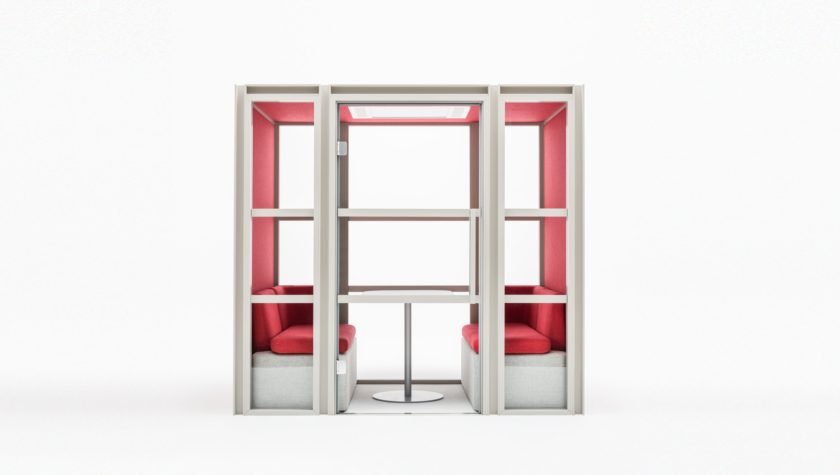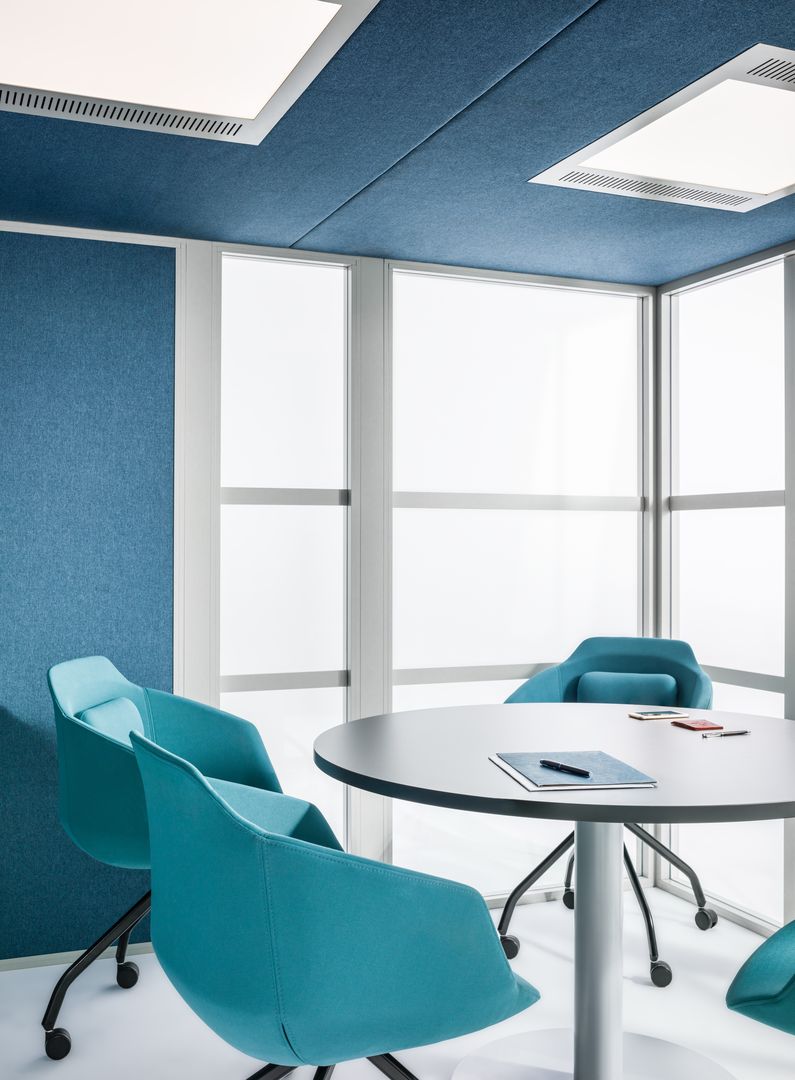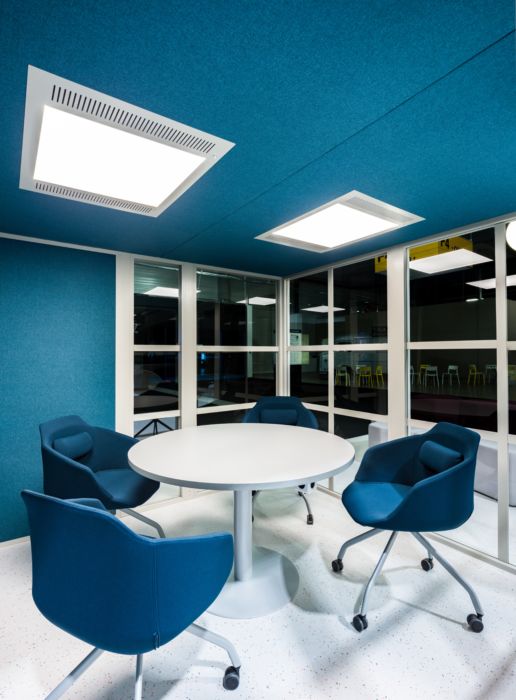According to experts, variety and flexibility are the most commonly named features of a modern company. They are believed to be the source of creativity and innovation. Flexibility is no longer associated solely with the working remotely.
Contemporary offices suppose to create space for various activities and at the same time take into consideration different preferences and temperaments of its employees. Team leaders know that the greater variety of spaces is, the greater the potential of human capital. Despite the common opinion, this is a crucial aspect in every organizational model. All employees consider a possibility of controlling the surrounding and its conditions to be one of top three factors that influence the way we perceive the office (based on CBRE “How we want to work?” research).

Cabinet model
A system based on the dominance of private spaces over common ones is still perceived as the most convenient. It is widely known that it provides the most of acoustic and visual privacy; nevertheless, not everyone feels comfortable in such conditions. Those spaces would be perfect for introverts who need silence and seclusion. On the other hand, those who are in their element where there is bustle and vivid atmosphere can be overwhelmed by this peaceful environment.
One of the disadvantages of this model are meetings, even for a few people. Organizing meetings in cabinets does not provide optimal conditions for exchange of thoughts. In such situations, conference halls become essential as they allow cooperation of greater number of participants; however, they require specific spaces. Acoustic pod systems Hako Meeting are a comprehensive solution that does not require permanent divisions. Depending on the needs, they can become specious office phone booths or comfortable meeting places.


Open space model
Open plan is still believed to be the most popular due to economical and organizational aspects as well as the fact that it assumes a minimal number of partition walls. Dedicated work spaces are distributed among various sections of the office, co-existing and affecting one another. Employees’ interactions and meetings in such spaces are most spontaneous, what makes acoustics a matter of great importance.
As for open spaces, it is known that they strongly restrict decision-making in controlling the working environment. No wonder then, when it comes to concentration, this model is being perceived as least supportive. In such a situation, prioritizing the matter of sound cannot be considered unfounded. What is more, apart from basic solutions like soundproofing panels – it is worth equipping the office with phone booths. They provide privacy of conversations, prevent from interrupting others and additionally they can be employed as soundproofing pods for concentrated work.
The fact that distractors are affecting our concentration and communication, oftentimes disturbing the course of meetings, is rarely taken into consideration. That is why it is crucial to go for a two-way approach and to have places that provide high comfort of meetings. Hako Meeting systems ideally fulfil those requirements. Thanks to their glass walls, they help to maintain access to daylight as well as the contact with other zones of the office.

Flexible model
In terms of architecture, flexible office is quite similar to open space model, what is indicated by a minimal number of partition walls. Nonetheless, flexible model is guided by the principle of hot desking, in accordance to which, the employees are not assigned to just one workstation and are free to use anyone available at that moment. Usually there are fewer workstations than employees, whereas the rotational system imposes the policy of a clean desk. Therefore, storage systems and closed lockers are of the essence.
Due to lack of designated sectors and large diversity of people present in the office, it is safe to say that the matter of silence and noise is very important. Small soundproofing pods are capable of substituting oftentimes difficult to designate rooms dedicated to quite work. Moreover, they can work as additional workstations. On the other hand, acoustic halls fulfil the function of conference rooms and places designed for internal meetings.

Lifespace model
Lifespace type of office, among all other models, is the one that refers the most to the natural needs of employees. The key to success in this case is to skilfully zone and divide the spaces into working and recreational areas. A large diversity of solutions lets the user decide on the way his work is being organized and allows him to manage the surroundings.
In that instance, it turns out that by employing acoustic pods it is possible to obtain a whole spectrum of benefits. Thanks to their presence, designating individual workspaces or brainstorming arenas come without the need of building permanent walls. This function not only allow easy remodelling and rearranging in the future, but also gives the opportunity to use the pods as architectural and zoning elements.
There is no universal model, which would be capable of meeting the expectations of every group or institution. According to the rule, that if something is to satisfy everyone - no one will be content, the selection of optimal solution depends on numerous variables. Nevertheless, in every case there are ways to increase the control over the working environment what results in enhanced comfort of the user. Quite a big interest in rooms dedicated to quiet work and acoustic pods indicates that employees are willing to function efficiently in strongly interactive surroundings provided they are given an alternative in private spaces that allow them to concentrate on their work.